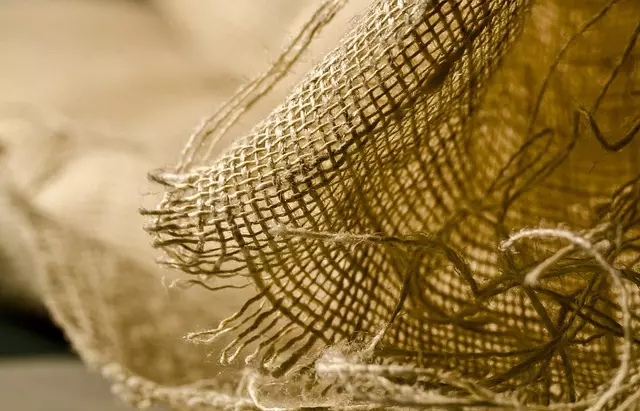Maeng Da Kratom, a potent strain of Mitragyna speciosa, is distinguished by its high alkaloid content and unique effects. Originating from Thailand's forests, it's crucial to replicate its natural environment for optimal cultivation. This involves precise conditions such as ample sunlight, moderate humidity, and fertile soil with a pH between 5.0 and 7.0. Indoor environments can provide better control over these factors, potentially leading to higher-quality Maeng Da. The strain has a longer vegetative phase than others, influencing its alkaloid profile and potency, and the timing of harvest is critical for maintaining its efficacy. For those interested in how to grow kratom plants, particularly Maeng Da, careful attention must be paid to these specific environmental requirements to achieve high-caliber leaves that meet consumer expectations. The effects of Maeng Da can range from stimulating at lower doses to analgesic and sedative at higher dosages, making it versatile for various uses. With the right conditions, growers can cultivate this strain sustainably, ensuring its continued availability for those who use it ethically and legally.
Maeng Da Kratom, renowned for its unique alkaloid profile and diverse effects, has garnered significant attention in herbal circles. This article delves into the intricacies of this botanical powerhouse, from its Southeast Asian origins to the specialized techniques required to cultivate it. Discover the essence of Maeng Da Kratom through its effects and myriad uses, and learn the key elements for how to grow kratom plants, ensuring you can nurture these plants effectively in your own environment. Join us as we explore the world of Maeng Da Kratom, a journey that promises to be both enlightening and insightful.
- Understanding Maeng Da Kratom: Origins and Varieties
- The Essence of Maeng Da Kratom: Effects and Uses
- Cultivating Maeng Da Kratom: Climate, Soil, and Propagation Techniques
Understanding Maeng Da Kratom: Origins and Varieties

Maeng Da Kratom, a strain of Mitragyna speciosa, is a highly regarded variety within the realm of kratom users for its unique alkaloid profile and stimulating effects. Native to the dense, humid forests of Thailand, Maeng Da translates to “Pima,” or “Mother of Heaven,” reflecting its esteemed status among indigenous populations. The leaves of this kratom strain are known to contain a higher concentration of mitragynine and 7-hydroxymitragynine compared to other strains, which are thought to contribute to its distinctive effects.
The cultivation of Maeng Da kratom plants is a meticulous process that requires specific environmental conditions, including the right balance of sunlight, humidity, and soil composition. While it can be grown outdoors in tropical climates, careful attention must be given to the plant’s needs to ensure optimal growth. Indoor cultivation, under controlled conditions, allows for more precision in climate control and can lead to a more consistent product. Those interested in how to grow kratom plants should note that Maeng Da requires a longer vegetative stage compared to other varieties, which can influence its alkaloid content and potency. The plant’s maturity and the harvesting time are crucial factors in determining the strain’s efficacy and desired effects. It is important for growers to understand these nuances to produce high-quality Maeng Da kratom leaves that meet consumer expectations.
The Essence of Maeng Da Kratom: Effects and Uses

Maeng Da Kratom, originating from the Mitragyna speciosa tree, is a potent strain known for its distinct alkaloid profile and profound effects. The “Pimp Leaf” or “Grandmother Leaf,” as it’s colloquially referred to, earns its reputation through its unique impact on users’ well-being, often offering stimulating and euphoric sensations at lower doses, and analgesic and sedative properties at higher doses. The Maeng Da variety is found predominantly in Thailand, where it thrives in humid conditions with consistent rainfall; this environment mirrors its native habitat, which is crucial for maintaining the integrity of its effects. Those interested in cultivating Kratom plants should consider these environmental factors to replicate the optimal growing conditions, as detailed guides on how to grow Kratom plants are available for enthusiasts and prospective farmers.
The effects of Maeng Da Kratom are widely reported to vary depending on dosage and individual physiology. At moderate levels, users often experience heightened alertness, increased energy, and an enhanced mood. Conversely, when consumed in larger quantities, the strain is known to exert a more calming influence, potentially aiding in stress relief and fostering a sense of relaxation. The versatility of Maeng Da makes it a popular choice for both daily users seeking a reliable energy boost and individuals looking for a natural approach to managing chronic pain or improving sleep quality. As interest in Kratom cultivation grows, aspiring growers can turn to resources on how to grow Kratom plants to cultivate this unique strain responsibly and sustainably, ensuring its availability for both medicinal and recreational use within the bounds of the law.
Cultivating Maeng Da Kratom: Climate, Soil, and Propagation Techniques

Maeng Da Kratom, a strain of Mitragyna speciosa, is a unique variety that has gained popularity due to its distinct effects and high alkaloid content. Cultivating this specific type of kratom requires careful attention to climate, soil composition, and propagation techniques to achieve optimal results. The ideal climate for Maeng Da Kratom cultivation includes moderate humidity and temperatures that mirror its native environment in the forests of Thailand. These conditions encourage the plant’s resilience and potency. The soil should be well-draining with a slightly acidic pH, rich in organic matter to support the growth of kratom plants. Compost and aged manure can be used to enrich the soil and provide essential nutrients.
For propagation, growers typically use cuttings from mature kratom trees, as Maeng Da Kratom is a clone strain. The cutting should be taken from a healthy, vigorous plant and placed in a moist, humid environment to prevent dehydration while the root system establishes. A shaded area with indirect light is ideal for the first few weeks until the cutting has taken root. Once established, young kratom plants should be gradually acclimated to full sunlight to develop robustly. Regular watering and a regimen of nutrient-rich fertilization tailored to the kratom plant’s growth stage are crucial for maintaining healthy growth. Adhering to these cultivation practices can lead to successful Maeng Da Kratom plants that embody the potency and characteristics associated with this unique kratom strain. Those interested in how to grow kratom plants should prioritize creating an environment that replicates its natural habitat as closely as possible.
Maeng Da Kratom has long captivated enthusiasts with its unique properties and nuanced effects. From its Thai origins to its varied strain types, understanding Maeng Da’s essence and cultivation is crucial for both users and growers. This article has shed light on the intricacies of Maeng Da Kratom, from its invigorating effects to the specific environmental conditions that favor its growth. For those interested in how to grow kratom plants, particularly Maeng Da, the insights into optimal climate, soil composition, and propagation techniques are indispensable. As the popularity of this botanical continues to surge, so does the need for responsible cultivation practices. By heeding the guidance provided herein, both novice and seasoned kratom growers can work towards sustainable harvesting and maintaining the integrity of this remarkable plant.






